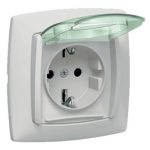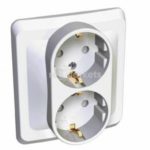Hidden sockets look aesthetically pleasing and are characterized by a high degree of security. They are also more convenient to use than their counterparts of the open mounting method. Installation of hidden sockets in a wall or other surface has some features that must be taken into account.
general characteristics
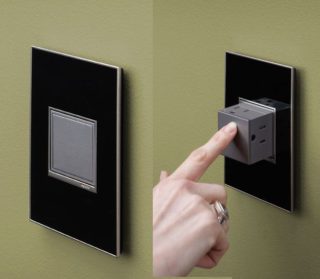
Secret sockets are installed if there is internal (hidden) wiring in the room. They are mainly built into the wall, and on top there is only a decorative strip. When turned on, the plug of the electrical appliance is fixed with a special clamping mechanism.
Type of electrical circuit
Recessed sockets into the wall are usually divided into devices with and without grounding. The first version is equipped with a special part providing a protective function. But this type of device is installed exclusively in those rooms where there is a grounding wire. They are equipped with sockets for pins, which are responsible for the grounding feed.
Sockets of this type are ideal for switching on a refrigerator, freezer. They are installed for electric stoves, ovens, air conditioners. Non-earthed options are two-pin. They are installed in rooms where there is a two-wire type wiring.
Moisture protection
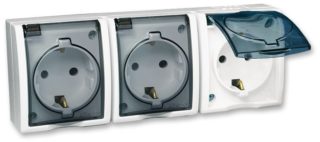
Sockets are usually divided into ordinary (standard) and waterproof. The first option can be installed in residential premises, in offices.
Devices with increased moisture protection are ideal for bathrooms, kitchens, saunas. They realize their function due to the presence of a special rubber membrane in the structure. Such models are often equipped with a plastic cover, which additionally protects against moisture penetration.
Number of pads
Sockets can be single, double or triple. The first type has only one socket for switching on electrical appliances. Such models can be used in any premises. Two- and three-seater options are mainly used in the kitchen, where there is a need for several devices to be connected to the network at the same time.
Features of hidden sockets for different rooms
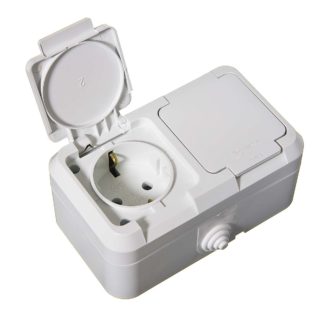
When using a hidden socket, it is necessary to take into account the peculiarities of the room in which it is installed.
- The devices to which the washing machine is connected must have an increased degree of protection against moisture.
- In the kitchen, it is appropriate to use special pull-out sockets that are built into the countertop or furniture. These models provide limited access to electricity and save space.
- On the street, special types of outlets are installed with increased protection against moisture and dust.
- When choosing a device for a bedroom, more attention is paid to its appearance. The socket must have a beautiful body, fit well into the interior and be located in a place convenient for connecting electrical appliances.
In the children's room, models with child protection are appropriate. They are equipped with special plastic flaps. It is impossible to stick anything into such sockets, except for the plug of an electrical appliance.
Degree of protection
Models of two types are popular on the market - IP44, IP54. This marking indicates the degree of protection of the device from negative environmental factors.
The first number indicates the ability to work in intense dusty conditions, the second - humidity. The higher the degree indicated in the marking, the higher the degree of protection.
In everyday life, IP44 devices are common. They are protected against the ingress of foreign particles larger than 1 mm. Additionally, their housing is resistant to moisture penetration. IP54 sockets are especially protected. It is recommended to use them outdoors or in dusty rooms.
Installation tips
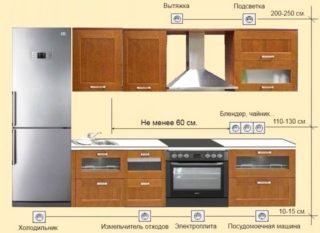
When installing hidden sockets, you must adhere to simple rules:
- The optimal height for installing devices is 30-80 cm. There are also skirting models that are mounted much lower. Also on sale there are sockets hidden in the floor.
- If small children live in the house, it is allowed to increase the mounting height.
- If there is a grounding function, the device is installed at a distance of more than 50 cm from gas pipes and heating electrical appliances.
- When installing the sockets, a surplus of cable in the amount of 5-6 cm is provided.
- Models that need to be hidden in the wall must be installed in special plastic or metal boxes.
- Before starting the installation, check the condition of the electrical network. An indicator screwdriver is used to test the voltage.
Experts recommend installing the necessary accessories during the installation of electrical wiring. When installing several connectors in close proximity, boxes with the required number of pads are used. Subsequently, they are connected to each other. A loop is also used to mount the sockets. It is used to connect device contacts.
Installation instructions
In order for the electrical work to be successful, it is necessary to adhere to a strict sequence of operations.
Preparatory stage
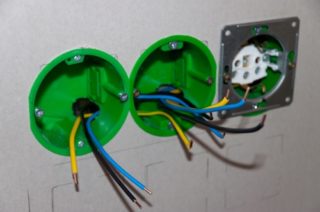
The place on the wall where the installation will be carried out is marked with a marker. To get a niche, where you can later hide the body of the device, use a hammer with a chisel. To speed up the installation work, an electric drill is used. When choosing a tool, be sure to take into account the material from which the wall is made. The formed niche should have a certain depth and smooth edges, which will simplify the subsequent installation of the device body.
To install the socket, building mixtures are used - plaster, gypsum, adhesives. The box must completely cover the opening. The resulting gaps must be filled with the selected composition. Installation work is continued only after the adhesives have solidified.
Connecting the socket to the mains
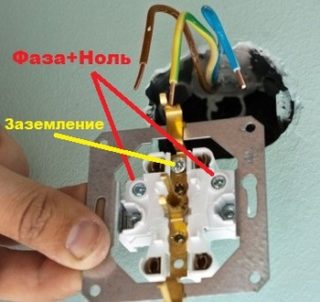
The electrical wire must exit through the hole in the back box. To facilitate the performance of further work, it is fixed with a special clamp.
To connect the contacts of the block with the wires of the electrical network, the latter are pre-stripped. It is recommended to first join zeros, then phase and ground. Screws and a spring mechanism are used to secure the wires.
Additional recommendations
Sliding legs or screws are used to fix the pads on the socket. Last but not least, a plastic decorative strip is mounted.
When installing floor covers, a special box is used to install the sockets. It can be omitted when mounting on a countertop surface.
Technical requirements
When installing hidden sockets, simple rules are followed:
- When choosing a device, the following technical parameters are taken into account: value and type of current, voltage level, connector rating.
- In the presence of open wiring, the use of concealed sockets is unacceptable.
- High-quality devices are made exclusively from non-combustible materials that provide a high degree of reliability.
When installing outlets, take into account that for every 6 sq. m of the room there should be one connector. There may be fewer of them in the corridor or hallway (1 piece / 10 sq. M). In the kitchen, the number of outlets that are allowed to be installed is significantly greater. For a room of 8-10 sq. m, the presence of four connectors is considered optimal. In this case, the power of three sockets should be within 6 A, the fourth with grounding - up to 10 A. In the presence of an electric stove, a 25 A connector is considered optimal.

